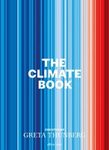![Global Warming Science Global Warming Science]()
Click to have a closer look
About this book
Contents
Customer reviews
Biography
Related titles
About this book
This textbook introduces undergraduates to the concepts and methods of global warming science, covering topics that they encounter in the news, ranging from the greenhouse effect and warming to ocean acidification, hurricanes, extreme precipitation, droughts, heat waves, forest fires, the cryosphere, and more. This book explains each of the issues based on basic statistical analysis, simple ordinary differential equations, or elementary chemical reactions. Each chapter explains the mechanisms behind an observed or anticipated change in the climate system and demonstrates the tools used to understand and predict them. Proven in the classroom, Global Warming Science also includes "workshops" with every chapter, each based on a Jupyter Python notebook and an accompanying small data set, with supplementary online materials and slides for instructors. The workshop can be used as an interactive learning element in class and as a homework assignment.
Contents
Preface
1 Overview
2 Greenhouse
3 Temperature
4 Sea Level
5 Ocean Acidification
6 Ocean Circulation
7 Clouds
8 Hurricanes
9 Arctic Sea Ice
10 Greenland and Antarctica
11 Mountain Glaciers
12 Droughts and Precipitation
13 Heat Waves
14 Forest Fires
Notes
Bibliography
Index
Customer Reviews
Biography
Eli Tziperman is a professor of oceanography and applied physics in the Department of Earth and Planetary Sciences and the School of Engineering and Applied Sciences at Harvard University.
Textbook
By: Eli Tziperman(Author)
315 pages, 150 colour illustrations
"This book and its associated materials provide an excellent pathway for developing a rigorous understanding of the challenges that human society is likely to face in coming decades."
– I. D. Sasowsky, CHOICE
"In this masterful book, Tziperman uses simple quantitative models to provide insights into complex problems. Global Warming Science gives students the tools they need to make their own discoveries and tackle new problems."
– Mark Cane, Columbia University
"Tziperman elegantly addresses many of the central aspects of global warming, providing an excellent introduction for students and an invaluable refresher for active researchers."
– Isaac M. Held, Princeton University
"Global Warming Science is a wonderful resource for anyone seeking to ground their understanding of climate change in the physics of the climate system. With clear explanations coupled to mostly unintimidating math, Tziperman leads readers from first principles to the big-picture processes that control heat waves, sea level, droughts, and wildfire. All of us who work on climate change can benefit from the way this book links the 'what' of climate change to the 'why' and 'how.'"
– Chris Field, Stanford University
"An exceptionally lucid, concise, and readable textbook that will be enjoyed by undergraduate students seeking to learn about the current newsworthy subject of climate change at a more rigorous level."
– Kerry Emanuel, author of What We Know about Climate Change
"My overall impression of this book is that I love it. Tziperman has written an engaging, fun-to-read textbook that fills an important gap, and I expect that it will be enthusiastically received by instructors teaching quantitative undergraduate climate courses. A simply excellent contribution."
– Jonathan M. Gilligan, coauthor of Beyond Politics: The Private Governance Response to Climate Change




































